How Do Objects Look from Different Angles?
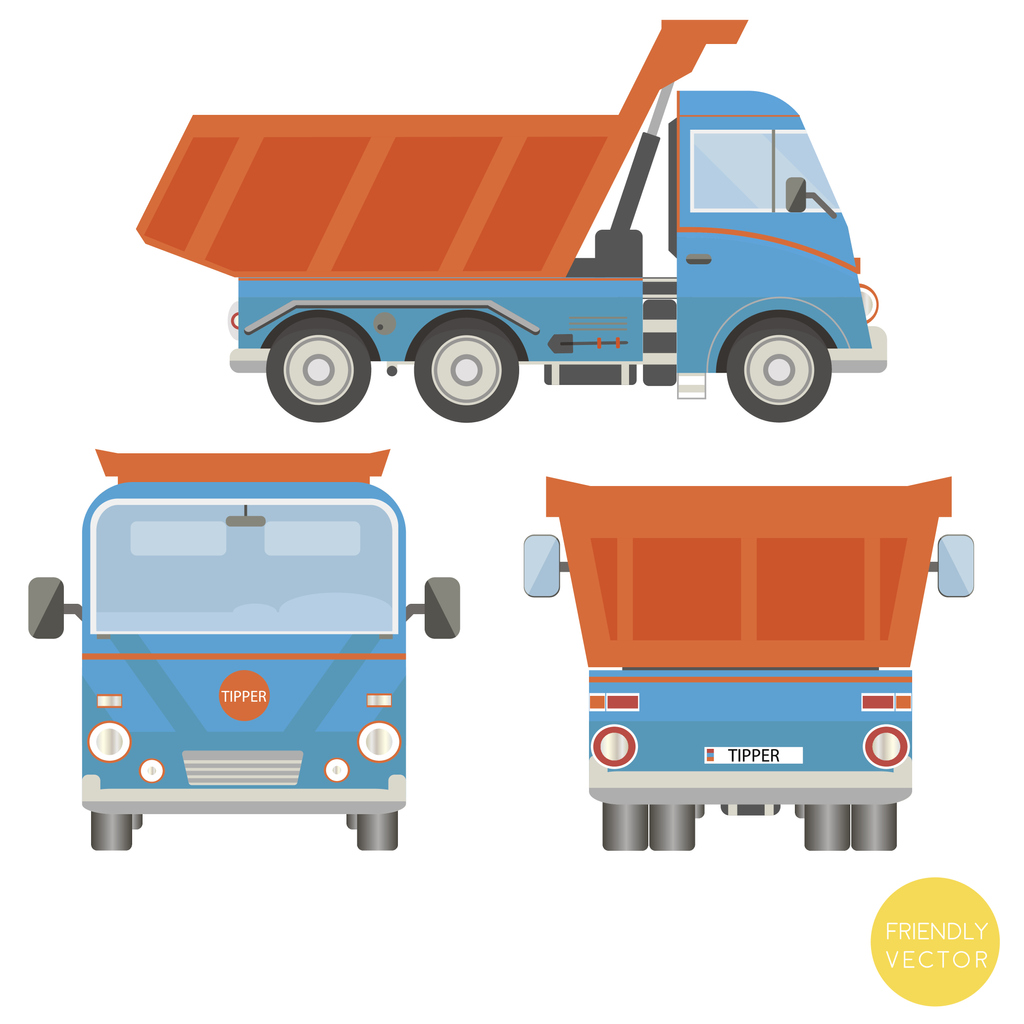
Dump truck seen from different angles (friendlyvector, iStockphoto).

Dump truck seen from different angles (friendlyvector, iStockphoto).
How does this align with my curriculum?
| Grade | Course | Topic |
|---|
Students develop and apply observing, predicting and spatial reasoning skills to explore the position of objects.
Overview
Students use linking cubes to build and sketch shapes and observe how they look from different perspectives.
Timing
30- 45 minutes
Setting the Stage
Spatial sense is an awareness of one’s surroundings and the objects in it. Spatial reasoning is the capacity to think about those objects in three dimensions - for example, to think about how an object might look when it is rotated. In this inquiry, students use the Key Concept Exploration learning strategy to develop their spatial reasoning skills as they explore how objects look from different perspectives.
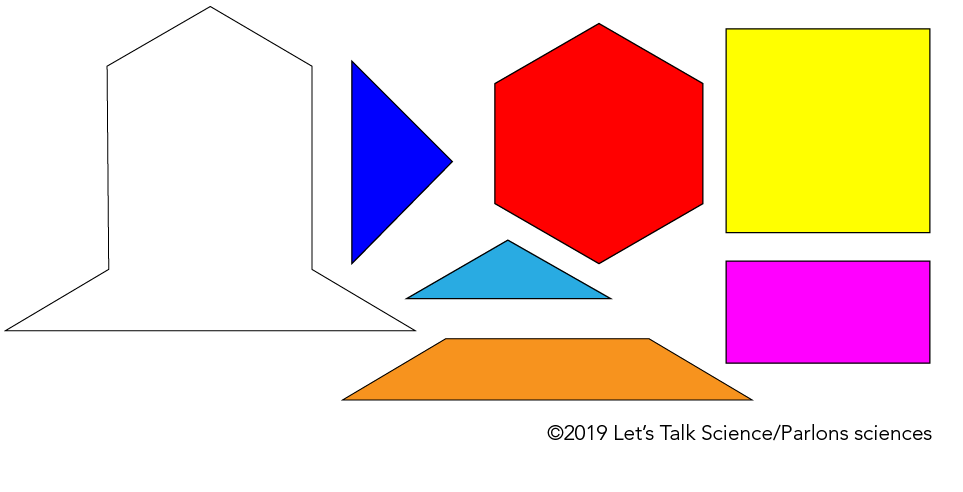
This inquiry could begin from:
- observations made while students are engaged in creating (composing and decomposing) shapes with pattern blocks. Discuss using questions such as:
- “What do you think will be the fewest number of blocks you’ll need to fill the figure? What would be the largest number of blocks you could use?”
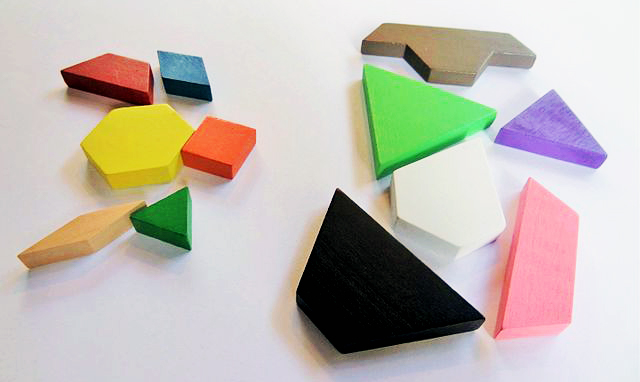
- a visual arts lesson on perspective as one of the principles of design. Discuss using questions such as:
- “How will you show that your house is very far away from where you have put yourself in your drawing?”
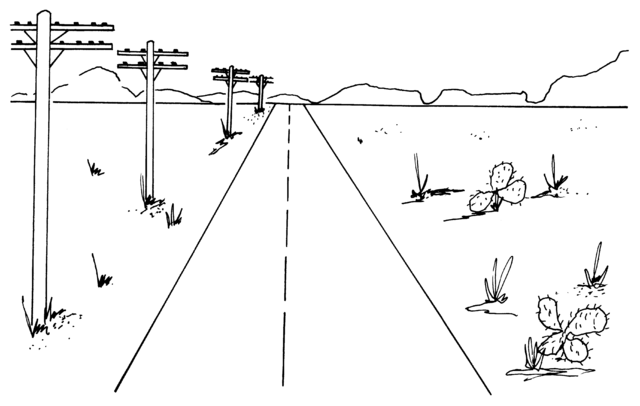
- a book such as Lucy in the City by Julie Dillumuth. Discuss using questions such as:
- “Lucy had a 'bird’s eye' view to help her find her family. How would that be different from a worm’s eye view? Which would you rather have? Why?”
- “What is meant by a ‘bird’s eye' view? Where could you go to get a bird’s eye view of your home? Your school? The Earth?”
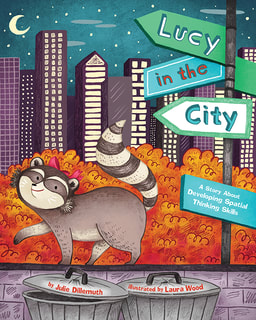
Details
- a regular-shaped object such as a cube
- an irregular-shaped object such as a shoebox
- 5 linking cubes per student
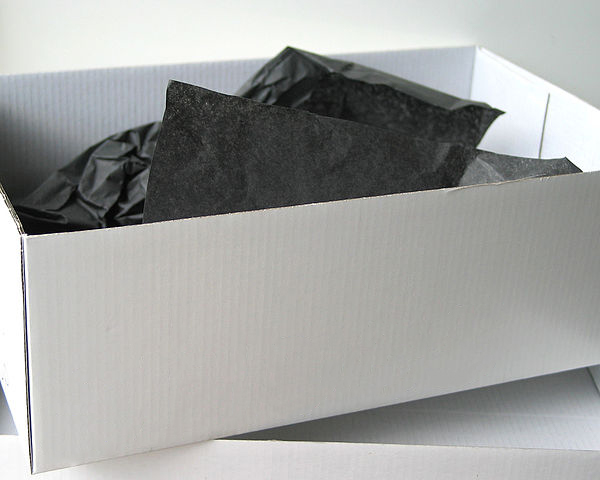
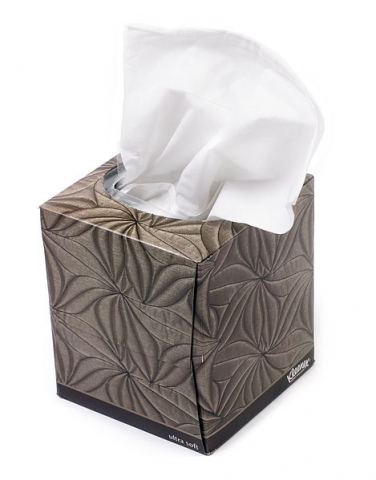
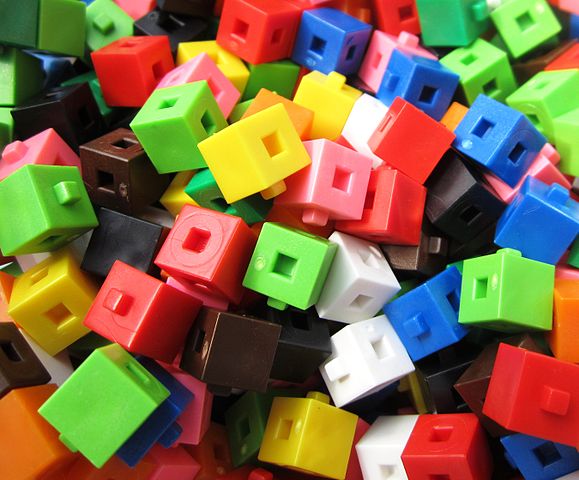
Students will use the Key Concept Exploration learning strategy to develop and apply the skills of Observing, Predicting and Spatial Reasoning while exploring the relative position and motion of objects.
Students:
- describe the position of a regular shape (e.g., a cube).
- Educator adds objects in various positions in relation to the object.
- add descriptions of the position of the object (e.g., object is between the table and the book, to the right of the apple, behind the lunch bag, and in front of the mitten).
- Look at the objects from different perspectives (e.g., from opposite sides of the table) and again describe the position of the object, then compare the descriptions. How are the descriptions of position similar and different?
- Educator reinforces to students that the position of the object is relative and depends upon the reference point or perspective used to describe it (i.e., the position from which a student is describing it).
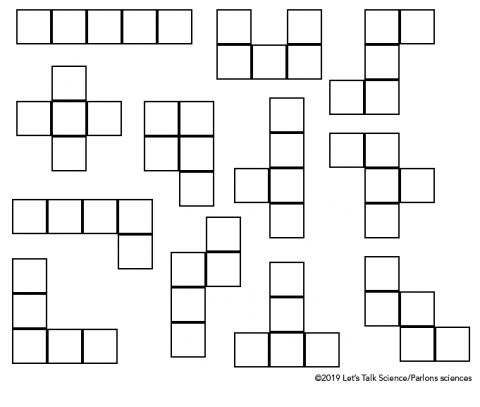
- visualize and predict what the regular shape looks like from various perspectives (i.e., from above, from below, from the sides).
- sketch and label what they see in each view (i.e., from above, from below, from the sides).
- check their predictions and name the patterns they observe (e.g., for a cube, the pattern would be same, same, same, same or A, A, A, A when comparing the views of the object from the top, bottom, and sides).
- visualize and predict what an irregular shape (e.g., a shoe box) looks like from various perspectives (from above, from below, from the sides).
- sketch their predictions and then share them with each other, and compare and contrast the possible pattern for the irregular shape with the pattern of the regular shape. They then check their predictions and name the pattern they observe (e.g., for a shoebox, the pattern would be same, same, different, different or A, A, B, B when comparing the views of the object from the top, bottom, and left and right sides).
- build an irregular shape with 5 linking cubes.
- sketch and label what they see in each view (i.e., from above, from below, from the sides).
- share their sketches with others and describe what they notice about the shapes (e.g., no predictable pattern as with the cube and the shoebox).
Observe and document, using anecdotal comments, photos and/or video recordings, the student’s ability to:
- Communicate – students use appropriate vocabulary (i.e., positional language) to describe the position of an object
- Observe – students observe a regular and an irregular shape from various perspectives and identify the patterns seen
- Recognize Patterns – students identify the patterns observed in a regular shape and an irregular shape viewed from various perspectives (i.e., top, bottom, all sides)
- Compare and Contrast – students compare and contrast patterns in regular and irregular shapes viewed from various perspectives
- Students visualize and predict what a regular and an irregular shape will look like from various perspectives
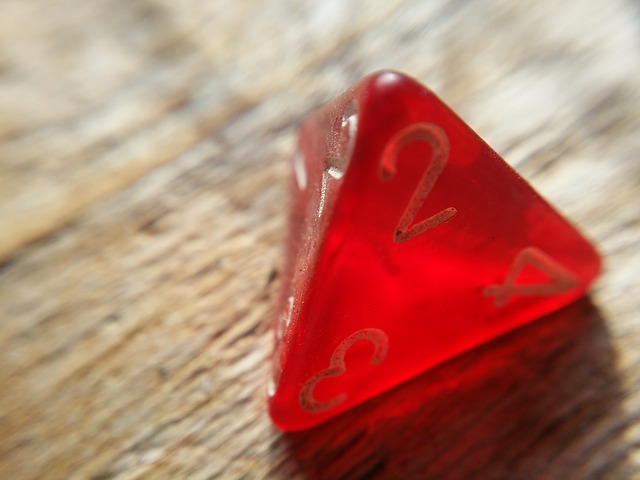
| Students: Saying, Doing, Representing |
Educator: Responding, Challenging |
|---|---|
| Students show understanding of the concept that the position of an object is relative and depends on the reference point/perspective being used to describe it (i.e., the position from which a student is observing and describing it). |
|
| Students visualize, predict, sketch and check predictions of what regular and irregular shapes look like from various perspectives. |
|
| Students identify the patterns observed in a regular shape and an irregular shape viewed from various perspectives |
|
| Students compare and contrast patterns in regular and irregular shapes viewed from various perspectives. |
|
Literacy
- Use appropriate vocabulary (e.g., positional language such as in front of, behind, on top of, to the left of, to the right of, flip, turn, slide)
Mathematical Thinking
- Describe locations using positional language (e.g., “The cup is on top of the papers under the shelf.”)
- communicate understanding of basic spatial relationships (e.g., use visualization, perspective, and movements [flips/reflections, slides/translations, and turns/ rotations])
Visual Arts
- Develop the concept of perspective (e.g., explore bird’s eye view, worm’s eye view)
Health & Physical Education
- Develop spatial awareness:
- in interpersonal skills (e.g., respecting others’ space)
- in movement skills (e.g., use of space, moving through space)
- as a safety consideration (e.g., being aware of personal space)
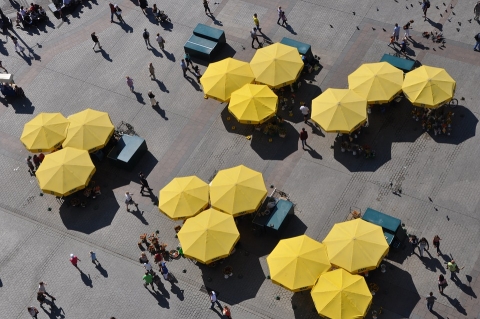
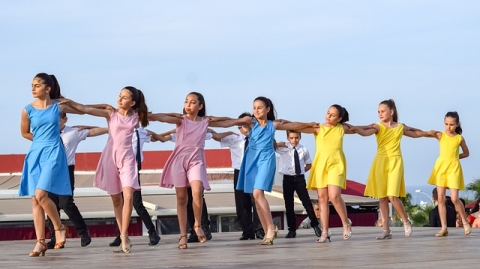
If your students are interested in learning more, the following may provoke their curiosity:
- Help students to make connections between viewing objects from different perspectives and seeing problems and issues from different perspectives. For example, in social studies students learn that it is important to consider and respect other’s perspectives, and that in diverse communities, different groups have different perspectives. Use examples that are unique to your classroom and school community to explore this concept.
- Ask students to visualize a familiar space in the school. Have them draw a map of the space based on their visualization. Then have them describe the location of an object in the space to another student, and ask the student to identify the object.
- Describe an object using relative position language and have students find the object you are describing (e.g., “The object I am thinking of is to the right of the door, on the floor and beside the garbage can. What is the object?”)
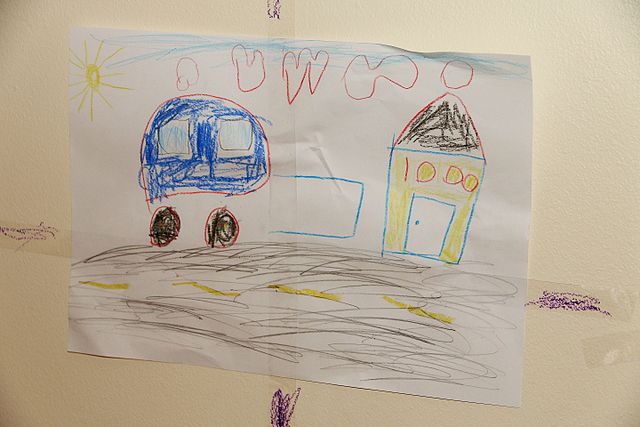
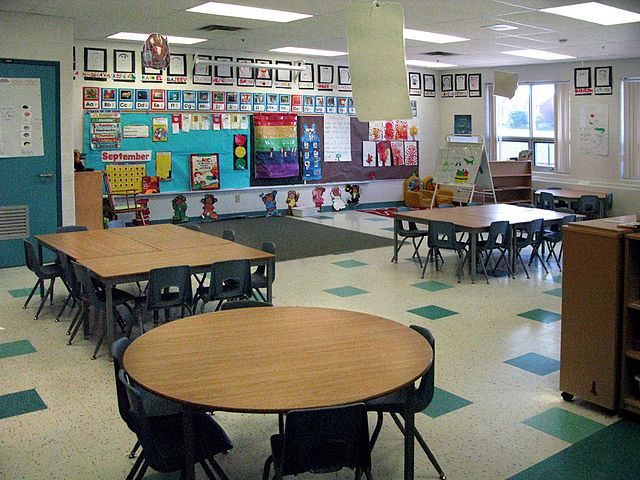
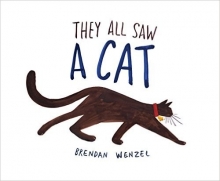
They All Saw a Cat
by Brendan Wenzel
In this glorious celebration of observation, curiosity, and imagination, Brendan Wenzel shows us the many lives of one cat, and how perspective shapes what we see. When you see a cat, what do you see?
ISBN: 9781452150130
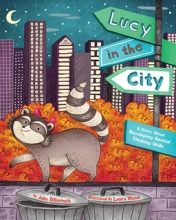
Lucy in the City: A Story About Developing Spatial Thinking
by Julie Dillemuth
One night, Lucy the raccoon follows her family out of their den, and gets distracted by a jar of peanut butter. Separated from her family, Lucy wonders how will she ever find her way back to her cozy den? With the help of a friendly owl and his bird's-eye view, Lucy tunes into the world around her and navigates herself home!
ISBN: 9781433819285
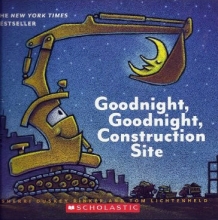
Goodnight, Goodnight, Construction Site
by Sherri Duskey Rinker and Tom Lichtenheld
As the Sun sets on a construction site, all of the construction vehicles get ready to go to sleep. Readers see each of the construction vehicles from a variety of angles as they finish their work and say goodnight.
ISBN: 9780545480581
How We See (Backgrounder)
Learn about how human vision works as well as some common types of vision problems.
Why is everything so small down there? (Hands-on Activities)
Explore how we see things far and near and from different angles. It's all about perspective!
Materials
- a regular-shaped object such as a cube
- an irregular-shaped object such as a shoebox
- 5 linking cubes per student



What to Do
Students will use the Key Concept Exploration learning strategy to develop and apply the skills of Observing, Predicting and Spatial Reasoning while exploring the relative position and motion of objects.
Students:
- describe the position of a regular shape (e.g., a cube).
- Educator adds objects in various positions in relation to the object.
- add descriptions of the position of the object (e.g., object is between the table and the book, to the right of the apple, behind the lunch bag, and in front of the mitten).
- Look at the objects from different perspectives (e.g., from opposite sides of the table) and again describe the position of the object, then compare the descriptions. How are the descriptions of position similar and different?
- Educator reinforces to students that the position of the object is relative and depends upon the reference point or perspective used to describe it (i.e., the position from which a student is describing it).

- visualize and predict what the regular shape looks like from various perspectives (i.e., from above, from below, from the sides).
- sketch and label what they see in each view (i.e., from above, from below, from the sides).
- check their predictions and name the patterns they observe (e.g., for a cube, the pattern would be same, same, same, same or A, A, A, A when comparing the views of the object from the top, bottom, and sides).
- visualize and predict what an irregular shape (e.g., a shoe box) looks like from various perspectives (from above, from below, from the sides).
- sketch their predictions and then share them with each other, and compare and contrast the possible pattern for the irregular shape with the pattern of the regular shape. They then check their predictions and name the pattern they observe (e.g., for a shoebox, the pattern would be same, same, different, different or A, A, B, B when comparing the views of the object from the top, bottom, and left and right sides).
- build an irregular shape with 5 linking cubes.
- sketch and label what they see in each view (i.e., from above, from below, from the sides).
- share their sketches with others and describe what they notice about the shapes (e.g., no predictable pattern as with the cube and the shoebox).
Assessment
Observe and document, using anecdotal comments, photos and/or video recordings, the student’s ability to:
- Communicate – students use appropriate vocabulary (i.e., positional language) to describe the position of an object
- Observe – students observe a regular and an irregular shape from various perspectives and identify the patterns seen
- Recognize Patterns – students identify the patterns observed in a regular shape and an irregular shape viewed from various perspectives (i.e., top, bottom, all sides)
- Compare and Contrast – students compare and contrast patterns in regular and irregular shapes viewed from various perspectives
- Students visualize and predict what a regular and an irregular shape will look like from various perspectives

Co-constructed Learning
| Students: Saying, Doing, Representing |
Educator: Responding, Challenging |
|---|---|
| Students show understanding of the concept that the position of an object is relative and depends on the reference point/perspective being used to describe it (i.e., the position from which a student is observing and describing it). |
|
| Students visualize, predict, sketch and check predictions of what regular and irregular shapes look like from various perspectives. |
|
| Students identify the patterns observed in a regular shape and an irregular shape viewed from various perspectives |
|
| Students compare and contrast patterns in regular and irregular shapes viewed from various perspectives. |
|
Cross-curricular Connections
Literacy
- Use appropriate vocabulary (e.g., positional language such as in front of, behind, on top of, to the left of, to the right of, flip, turn, slide)
Mathematical Thinking
- Describe locations using positional language (e.g., “The cup is on top of the papers under the shelf.”)
- communicate understanding of basic spatial relationships (e.g., use visualization, perspective, and movements [flips/reflections, slides/translations, and turns/ rotations])
Visual Arts
- Develop the concept of perspective (e.g., explore bird’s eye view, worm’s eye view)
Health & Physical Education
- Develop spatial awareness:
- in interpersonal skills (e.g., respecting others’ space)
- in movement skills (e.g., use of space, moving through space)
- as a safety consideration (e.g., being aware of personal space)


Extending the Learning
If your students are interested in learning more, the following may provoke their curiosity:
- Help students to make connections between viewing objects from different perspectives and seeing problems and issues from different perspectives. For example, in social studies students learn that it is important to consider and respect other’s perspectives, and that in diverse communities, different groups have different perspectives. Use examples that are unique to your classroom and school community to explore this concept.
- Ask students to visualize a familiar space in the school. Have them draw a map of the space based on their visualization. Then have them describe the location of an object in the space to another student, and ask the student to identify the object.
- Describe an object using relative position language and have students find the object you are describing (e.g., “The object I am thinking of is to the right of the door, on the floor and beside the garbage can. What is the object?”)


Supporting Media

They All Saw a Cat
by Brendan Wenzel
In this glorious celebration of observation, curiosity, and imagination, Brendan Wenzel shows us the many lives of one cat, and how perspective shapes what we see. When you see a cat, what do you see?
ISBN: 9781452150130

Lucy in the City: A Story About Developing Spatial Thinking
by Julie Dillemuth
One night, Lucy the raccoon follows her family out of their den, and gets distracted by a jar of peanut butter. Separated from her family, Lucy wonders how will she ever find her way back to her cozy den? With the help of a friendly owl and his bird's-eye view, Lucy tunes into the world around her and navigates herself home!
ISBN: 9781433819285

Goodnight, Goodnight, Construction Site
by Sherri Duskey Rinker and Tom Lichtenheld
As the Sun sets on a construction site, all of the construction vehicles get ready to go to sleep. Readers see each of the construction vehicles from a variety of angles as they finish their work and say goodnight.
ISBN: 9780545480581
Learn More
How We See (Backgrounder)
Learn about how human vision works as well as some common types of vision problems.
Why is everything so small down there? (Hands-on Activities)
Explore how we see things far and near and from different angles. It's all about perspective!